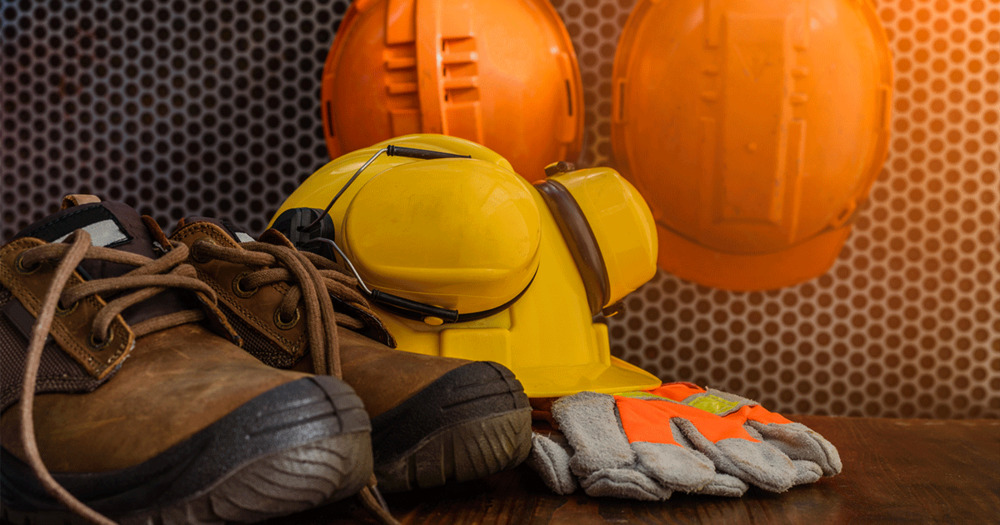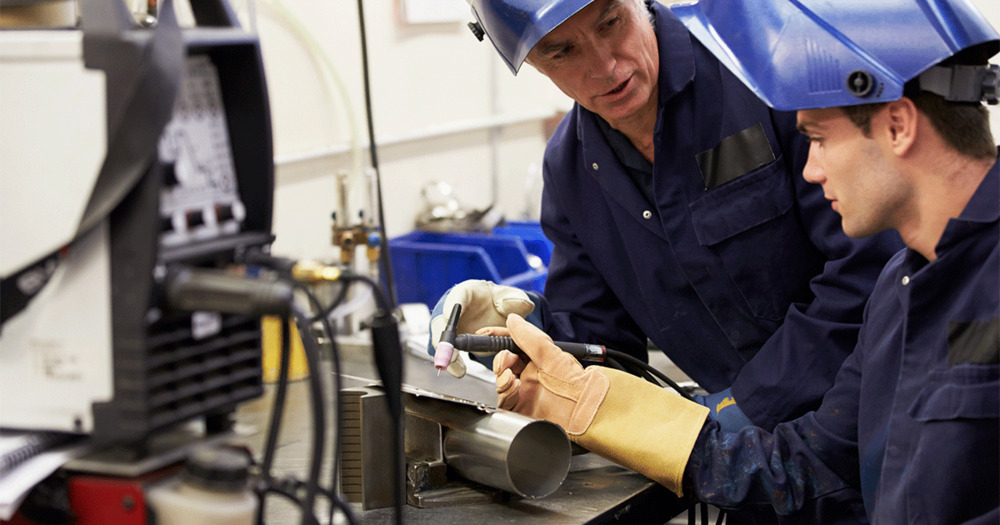
Personal Protective Equipment (PPE) is an instrumental part of worker safety. Employers should know what PPE is and how it can be used to keep worker safety.
Personal Protective Equipment is any type of equipment or clothing that a person wears to protect themselves from a safety hazard or limit their exposure to that hazard. PPE can be used to protect from a variety of hazards, including physical, radiological, chemical, electrical, biological, and mechanical.
There are various types of PPE that are most common. In an industrial workplace, the most common required PPE are safety or cut-resistant gloves, steel-toed safety boots, safety harnesses, hi-vis safety vests, eye protection such as safety goggles, and hard hats or other head protection. In other types of work, there may be other types of PPE that are used.
The Occupational Safety and Hazard Administration (OSHA) specifies that it is the employer’s responsibility to protect workers as much as possible. In order to provide a safe and healthy environment, OSHA standards outline several steps employers should take.
First, employers should provide workers with PPE. It is not the responsibility of the worker to purchase their own PPE. Ensure that workers are wearing PPE properly, as many may have never encountered it before.
PPE must be clean, comfortable, and stored in a safe location. Ensure that new PPE is acquired if it does not fit these requirements because it is dangerous for workers to use damaged PPE. This is especially true if workers do not know that their PPE is not fully functional.
Employers are responsible for training workers on the occupational hazards of their workplace, and the proper use of PPE. PPE safety training includes education on when PPE is necessary, what kind of PPE is necessary for what activities, how to put it on and take it off, the limitations of each piece of equipment, and the proper care of maintenance equipment. Employers should remember that PPE is the last line of defense for worker safety. This is to say that proper PPE training is important, however, it is always preferable if the hazard can be eliminated or substituted, or reduced through engineering and administrative controls. PPE can not ensure that workers are totally protected, even if it fulfills all the PPE requirements.

The benefits of having workers wear PPE are immense. The following reasons demonstrate how it helps both employers and employees.
Sometimes workers choose not to wear PPE that has been provided to them. In this case, it is a legal gray area whether the employer is liable for workplace injuries.
The best way for employees and employers to protect themselves is to wear PPE at all times. In this case, both will be protected in the event of an emergency and neither has to take a chance.
Acute injuries are easy to identify. However, appropriate PPE also helps to prevent long-term conditions that workers may not realize they are putting themselves at risk of contracting.
In many jobs, workers confront hazardous exposures to different chemicals and compounds. One prominent example is mesothelioma, a rare form of cancer that roughly 3,000 Americans were diagnosed within 2017.
Mesothelioma is often a result of exposure to asbestos fibers used in many construction materials. Modern science tells us that if workers wear appropriate PPE and shower and change before leaving the workplace then this will significantly decrease their chance of a mesothelioma diagnosis down the line.
In the event that the hazards present include toxic chemicals or gas, providing face protection and respiratory protection can go a long way. This might include gas masks, an appropriate respirator, or a self-contained breathing apparatus to ensure that the worker is limiting the toxic chemicals they are ingesting.
Every year, about 2.4 million eye injuries occur in the United States, either in the workplace or leisure time. About 50,000 of these injuries result in some loss of vision. It is estimated that 90% of these injuries could have been prevented with safety goggles.
If employers can provide sufficient eye protection it can go a long way in reducing unnecessary injury. 61% of eye injuries occur in manufacturing, construction, or trade jobs, making it especially important that workers in these industries receive proper safety glasses that fit their work environment and protect against eye hazards.
A wide range of stylish makes and models of safety glasses is available for purchase. Furthermore, side and face shields, leashes, foam gaskets, and cleaning kits are also available.
Hearing protection is important in jobs with loud sounds. Each year, an estimated 22 million workers are exposed to sounds loud enough to risk damaging their hearing. Select from the hearing protection equipment that can reduce noise exposure. Ear muffs and earplugs are both available, depending on the consumer’s needs.
Finally, hard hats are important to reduce the chance of injury. In some industries, falling objects are at risk of hitting workers in the head. A wide selection of head accessories should be considered in any construction or heavy-industry site. Models range from full-brim to cap style, with separate liners, sweatbands, and hearing protection.
Workers’ hands and feet are also at risk of injury if not protected. Foot protection can help prevent workers from slipping and protect the foot from heavy falling objects. Safety footwear is a standard requirement at many work and construction sites.
IMAGE: https://www.istockphoto.com/photo/personal-safety-equipment-gm1145610159-308404885
Hand protection is important if workers are touching hazardous materials or carrying rough materials. An extremely wide range of durable, comfortable safety gloves is available for any work environment or weather condition. Most models are cut-resistant with grip enhancement, and some even feature external bracing to further protect the hand from impacts, accidental crushing or cutting. Chemical-resistant rubber gloves can be used when workers are at risk of touching hazardous biological agents.
Hand and feet PPE are also important in extreme temperatures. In cold weather, they may be necessary to keep extremities from getting too cold. In hot weather, gloves can help grip slippery objects that are at risk of slipping on against sweaty hands.
Taking so many precautions can seem cumbersome. However, PPE can really improve the quality of the work day for employees.
Having the proper equipment can make the work much easier, as tasks are easier to complete and workers do not have to worry about their health and safety. Furthermore, it can prevent small injuries, like scrapes, bruises, and strained muscles that are not serious health concerns but make working more painful.
If used correctly, personal protective equipment can promote workplace safety and reduce employee exposure to potential hazards. Employers are obligated to administer proper maintenance of PPE and administer a safety program. By doing so, employers are not only ensuring a safer workplace for themselves but also protecting themselves against liability.